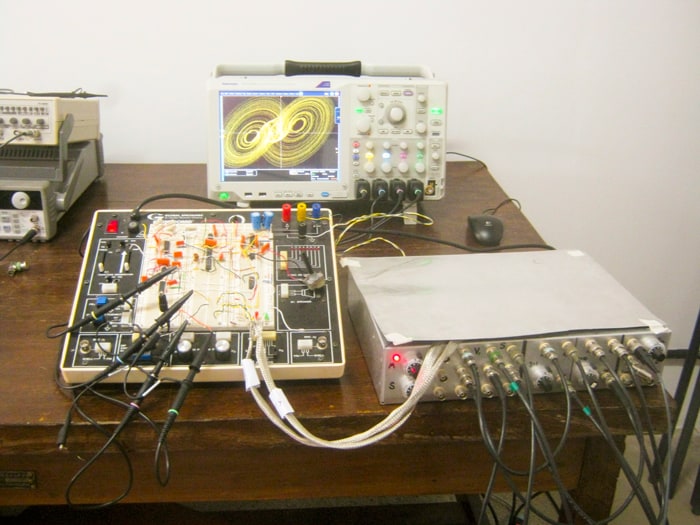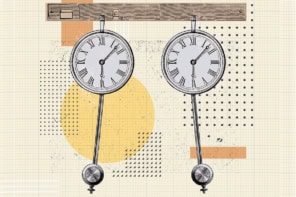
Physicists in Brazil, Switzerland and the US have predicted the onset of extreme events in a chaotic electronic circuit and then worked out a way of preventing the events from happening. The team believes that its work could provide important insights into how to prevent “dragon kings”, which are extreme events such as earthquakes and financial crashes that can occur with devastating effect in complex systems.
Researchers who study extreme events such as stock-market crashes and earthquakes use the term “dragon king” to describe an extreme event that is predictable – at least in principle – and not a random “act of God”. The term was coined by Didier Sornette of ETH Zürich, who cites the emergence of “megacities” such as Paris as a further example of dragon kings.
When a log–log graph of the populations of French cities versus the population rankings of those cities is plotted, all the points fall on a straight line with the exception of Paris. The French capital has a much greater population than is predicted by the log–log “Zipf plot” and it is therefore a dragon king. However, if all the information regarding the development of Paris was available, the reason for the city’s vast size could be deduced.
Now Sornette has joined forces with Hugo Cavalcante and Marcos Oriá at the Universidade Federal da Paraíba, Edward Ott of the University of Maryland and Daniel Gauthier of Duke University to create an electronic system that exhibits dragon kings.
Coupled chaos
The system comprises two electronic circuits that both undergo chaotic oscillations. The circuits are coupled so that one circuit is free to oscillate as the master, while the other responds as the slave. The circuits were chosen so that they are normally synchronized with each other: their voltages and currents having about the same values. However, the circuits will also occasionally fall out of synch for brief periods of time and such out-of-synch events are called “bubbles”.

For each bubble, the team measured how far out-of-synch the voltages and currents of the master and slave had become. When the researchers made a log–log plot of the magnitude of an event versus how many times such an event occurred, they found a clear linear relationship with larger events being much less likely to occur than smaller events.
However, there was one noticeable exception to this rule. Every once in a while a large bubble occurs. As well as being much larger than any of the “normal” excursions, these large bubbles were all about the same magnitude.
Rapid divergence
The team identified these large bubbles as dragon kings and then looked carefully at the conditions from which they emerged. According to Cavalcante, the dragon kings occur when the parameters of the master oscillator approach a region where it is very unstable. When this happens, the parameters of the master and slave diverge rapidly.
Cavalcante and colleagues then looked for ways of averting these extreme events. Their solution is to turn on a second, stronger coupling between the two circuits whenever the master circuit approaches the region of instability.
While the connection between events such as financial crashes and coupled chaotic oscillators may not be obvious, Cavalcante points out that similar behaviour is seen in financial markets. Indeed, the equations used to model markets are similar to those that describe the oscillators used in the experiment. As a result, techniques developed to predict and prevent dragon kings in the lab could someday be used to ensure market stability by intervening only when the conditions suggest a dragon king is about to occur.
UPDATE: A paper describing the research has now been published in Phys. Rev. Lett. 111 198701.



